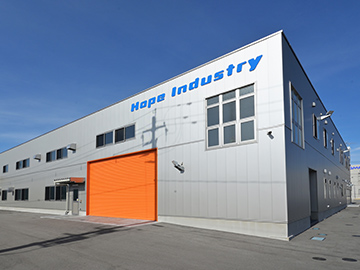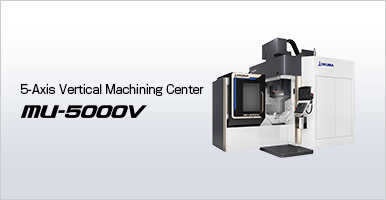- HOME
- Technology & Solutions Case Studies
- Hope Industry
Case Studies
—Why Okuma was chosen
Advancing into new fields utilizing manufacturing expertise gained through machining of precision parts for semiconductors
The MU‑5000V: optimized for high‑mix, low‑volume production
Hope Industry
- Industry
- Precision parts machining, prototyping, and assembly
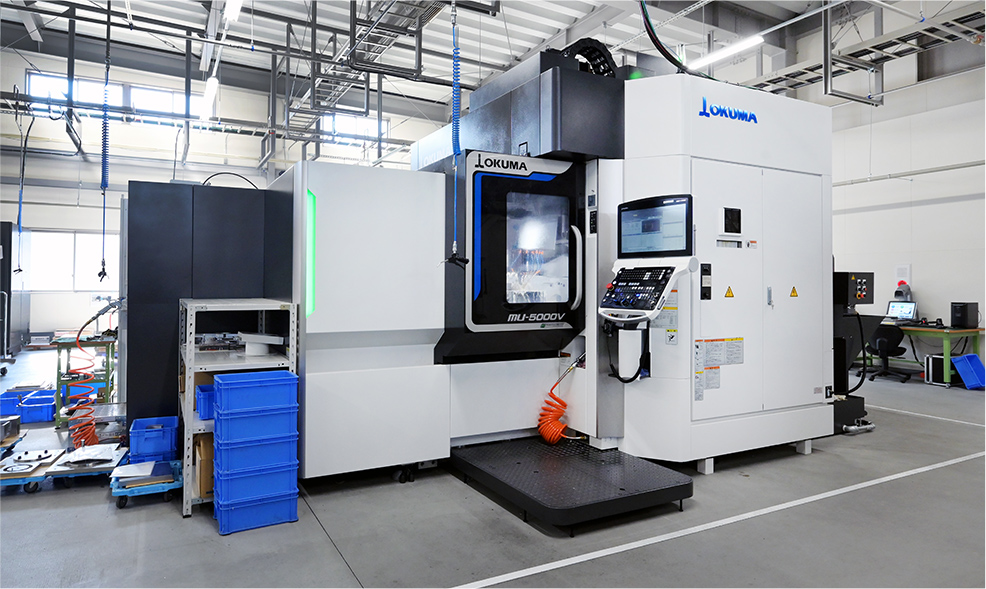
Background of installation
While searching for a strategic move to spur our next phase of growth, a 5‑axis machining center emerged as the leading option
We are eager to open up new fields in our business
Our 3‑axis vertical and horizontal machining centers have enabled prototype and precision‑parts machining, but the global surge in semiconductor demand has left us operating at maximum capacity. Times like these call for acquiring new technologies and making investments to secure future growth. When we solicited ideas and opinions from the shop floor, one proposal stood out. It was to install a 5‑axis machining center to take on more advanced machining challenges.
Introduction of the machine
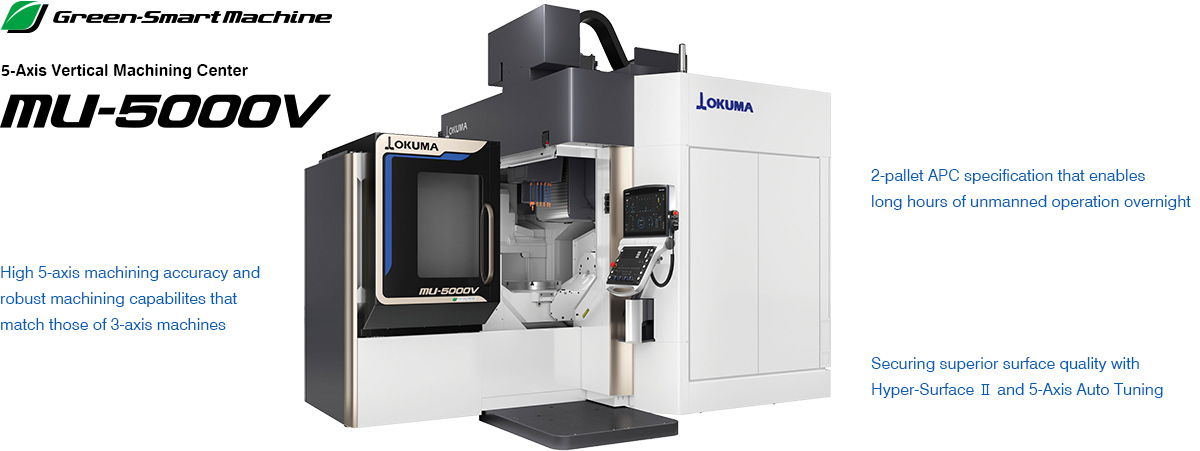
Decisive factor for installation
Okuma's MU-5000V was chosen from the perspective of basic performance, operability, and expandability.
Although we had high expectations for integrating multiple processes into one machine, we were concerned about the complexity of programming, the difficulty of interference checks, and about the risks of machine stoppages caused by collisions. Nevertheless, with an eye on our next stage of growth, we pushed ahead with the installation plan after realizing the need to boost productivity by raising our capability to do more unmanned operation.
During model selection, we compared 5‑axis machining centers from three suppliers and ultimately selected the MU‑5000V. The deciding factors were its high 5‑axis accuracy—on par with our 3‑axis machines that is essential for precision work—its robust machining capability, and the user‑friendly 21.5‑inch control panel and interface of the OSP‑P500. Support and maintenance before and after installation is critical of course, but we had no concerns with this because Okuma’s reliability had already been proven with our other machines. (Takahiro Suzuki)

President
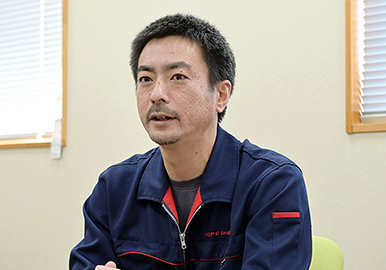
General Manager of Manufacturing
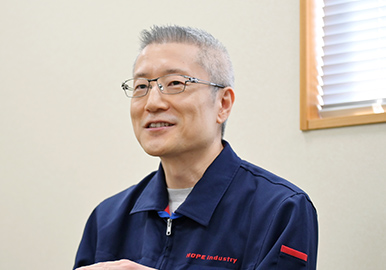
CAD-CAM Manager
Effectiveness of machine after installation
By integrating multiple machining processes into a single machine, time used for setup change was reduced by 35 percent
With 3-axis machines, each step is split across several setups, so every setup change consumes time and effort. A 5-axis machine can integrate those steps into one machine, allowing us to complete multiple processes within a one-chucking setup which dramatically lightens the workload.
Additionally, it is necessary to use a long end mill depending on the part shape with 3-axis machining. Setup for the part must be changed and machining direction must be adjusted. This requires time for setup preparation which involves centering of the workpiece, preparation of jigs, and tool interference checks. By contrast, the MU-5000V can handle workpieces requiring angled holes or back-side chamfers in a single-chucking operation, greatly improving overall efficiency.
Consistent dimensional stability and high machining performance—even in 5-axis machining
Because 5-axis machines have more complex kinematics, we expected the effects of thermal deformation to make tight-tolerance work difficult. However, the Okuma MU-5000V delivers the same dimensional stability as our 3-axis Okuma models, requires virtually no thermal-related compensation work, and maintains high accuracy over long runs.
The machine requires no warm-up operation, which is an enormous help. Our company has become accustomed to production based on Okuma's Thermo-Friendly Concept. We have also experienced its outstanding machining capability—it is a machine that cuts exceptionally well.
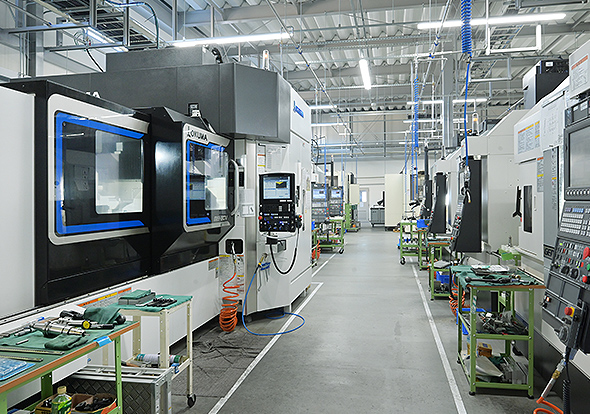

Impression of machine after installation
Boosting machine utilization with a 2-pallet APC (automatic pallet changer)
Having the idea of doing long hours of unmanned operations overnight in the future, we ordered a 2-pallet APC configuration that allows workpiece setup to be done even while the machine is running. This is to enable us to increase machine utilization rate to meet the growing demand for semiconductor related parts.
Securing superior surface quality with Hyper-Surface Ⅱ and 5-Axis Auto Tuning
The required surface quality for semiconductor components is exceptionally high. To achieve this, we use Hyper-Surface II. This function automatically corrects tool marks and edge unevenness caused by CAM data, thereby enhancing surface quality. This has markedly improved our machined surface quality.
Geometric errors such as rotary-axis misalignment can cause issues with machining accuracy. However, the 5-Axis Auto Tuning function automatically compensates for these errors quickly, providing added assurance.
We are currently machining a wide variety of parts while simultaneously collecting data on the MU-5000V to assess the machine‘s capabilities and the cost-effectiveness of 5-axis machining for diverse components. Beyond process integration, we expect the machine will open doors to new machining fields and industries for our company. This will broaden our business foundation and allow more customers to benefit from our technology. (Seiji Ando)
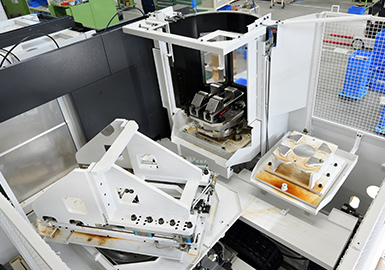
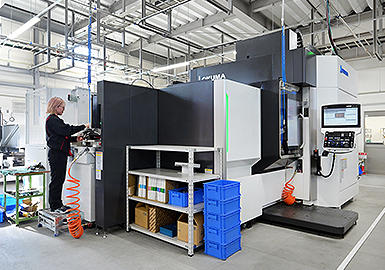
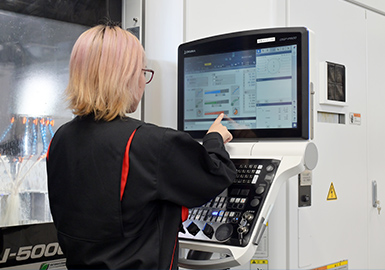
Customer Information
Hope Industry
(Shirakawa City, Fukushima Prefecture)
- Website
- https://www.hopeindustry.com/
Hope Industry was established in 1984 in Tokyo’s Ōta Ward. To accommodate for the growing demand of components used in semiconductor inspection equipment, the company opened its Shin‑Shirakawa Plant 1 in Fukushima Prefecture in 2019 and added Plant 2 on the adjoining site in 2023. The company specializes in precision parts machining, mainly using machining centers, and supplies products to manufacturers of semiconductor inspection equipment as well as to companies that produce broadcasting and communications equipment. In February 2024, the company installed its first 5‑axis vertical machining center, the MU‑5000V.
